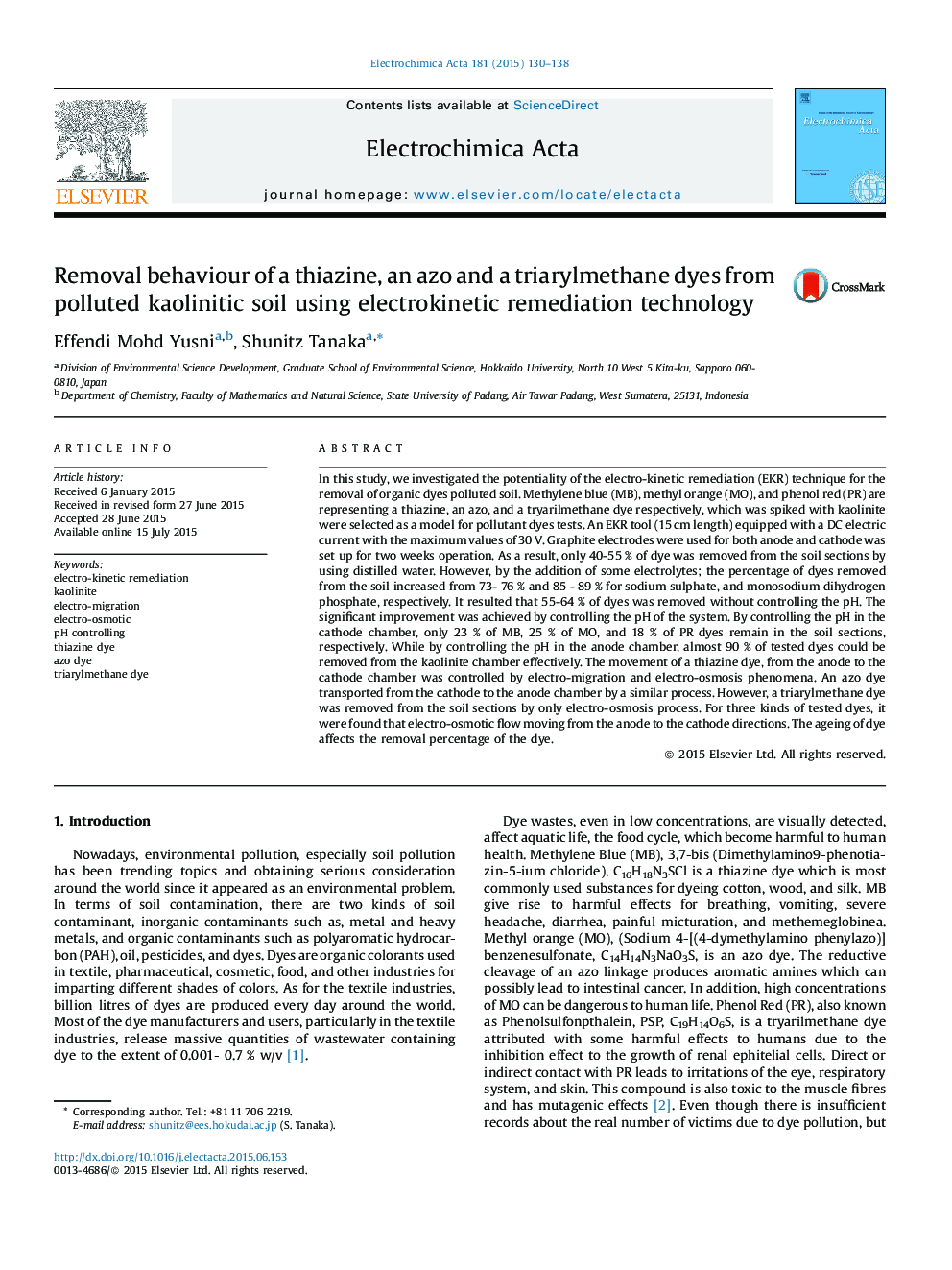| Article ID | Journal | Published Year | Pages | File Type |
|---|---|---|---|---|
| 183481 | Electrochimica Acta | 2015 | 9 Pages |
In this study, we investigated the potentiality of the electro-kinetic remediation (EKR) technique for the removal of organic dyes polluted soil. Methylene blue (MB), methyl orange (MO), and phenol red (PR) are representing a thiazine, an azo, and a tryarilmethane dye respectively, which was spiked with kaolinite were selected as a model for pollutant dyes tests. An EKR tool (15 cm length) equipped with a DC electric current with the maximum values of 30 V. Graphite electrodes were used for both anode and cathode was set up for two weeks operation. As a result, only 40-55 % of dye was removed from the soil sections by using distilled water. However, by the addition of some electrolytes; the percentage of dyes removed from the soil increased from 73- 76 % and 85 - 89 % for sodium sulphate, and monosodium dihydrogen phosphate, respectively. It resulted that 55-64 % of dyes was removed without controlling the pH. The significant improvement was achieved by controlling the pH of the system. By controlling the pH in the cathode chamber, only 23 % of MB, 25 % of MO, and 18 % of PR dyes remain in the soil sections, respectively. While by controlling the pH in the anode chamber, almost 90 % of tested dyes could be removed from the kaolinite chamber effectively. The movement of a thiazine dye, from the anode to the cathode chamber was controlled by electro-migration and electro-osmosis phenomena. An azo dye transported from the cathode to the anode chamber by a similar process. However, a triarylmethane dye was removed from the soil sections by only electro-osmosis process. For three kinds of tested dyes, it were found that electro-osmotic flow moving from the anode to the cathode directions. The ageing of dye affects the removal percentage of the dye.
